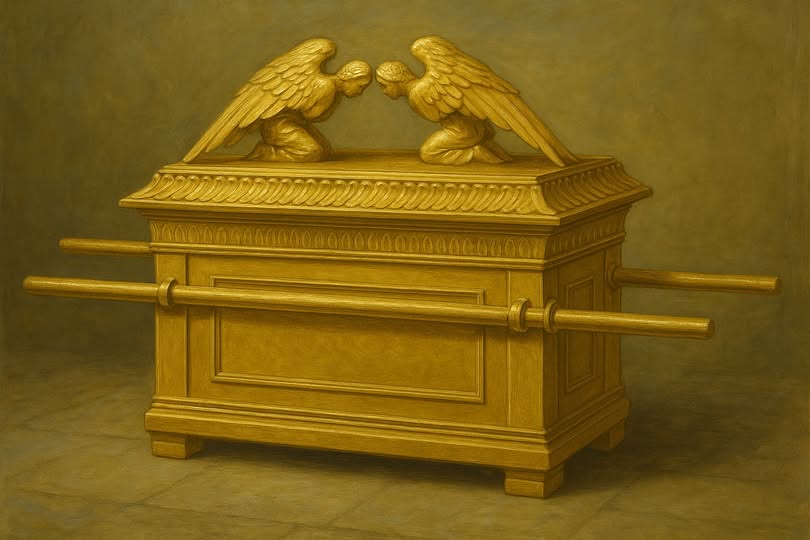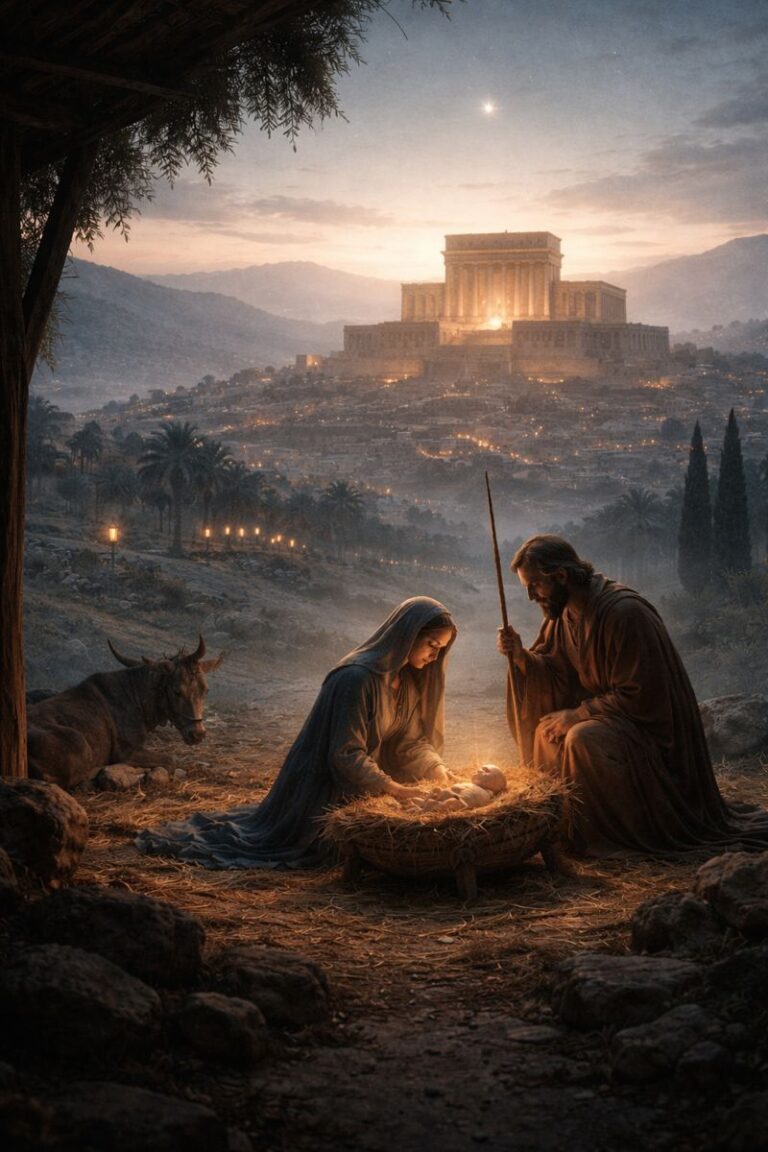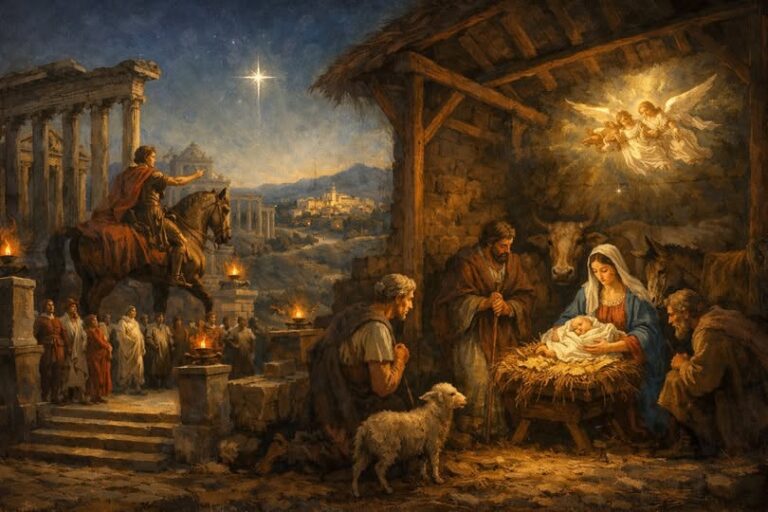
The Ark of the Covenant holds a unique place in biblical history. More than just a sacred container, it was a symbol of divine authority and presence, commissioned by Yahweh Himself and constructed under precise instructions given to Moses. Described in Exodus, the Ark was made of acacia wood overlaid with pure gold, measuring approximately 2.5 cubits long and 1.5 cubits wide and high. Within this ornate chest were the stone tablets bearing the Ten Commandments, along with a golden jar of manna and Aaron’s rod that had budded, according to Hebrews 9:4.
A Symbol of Presence, Not a Dwelling Place
Despite its sacred status, the Ark was never meant to be worshiped. It was not a dwelling place for Yahweh, nor did it contain His essence. Rather, it functioned as a visible sign of His covenant with Israel and a focal point of His presence. The Ark resided in the Holy of Holies, the innermost chamber of the Tabernacle and later the Temple. On the Day of Atonement, the high priest would enter that space and sprinkle blood on the mercy seat atop the Ark, representing the nation’s appeal for forgiveness.
This object stood at the center of Israel’s identity, reminding them that their God was not only holy but present and active among them. The Ark led them into battle, marked the crossing of the Jordan River, and signified the divine order of worship. Yet even with such significance, the biblical text makes clear that it was Yahweh who gave it meaning, not the other way around.
The Disappearance of the Ark
The Ark of the Covenant vanishes from the biblical record after the Babylonian destruction of Jerusalem in 586 BCE. No explicit account describes its fate. This silence has fueled centuries of speculation. Was it hidden? Destroyed? Taken? The mystery has become one of the most enduring in all of biblical archaeology.
Among the many theories, one of the most persistent claims is that the Ark was taken to Ethiopia. This idea has captivated researchers, theologians, and adventurers alike.
The Ethiopian Tradition
The Ethiopian claim centers on a revered text known as the Kebra Nagast, “The Glory of the Kings.” This 14th-century Ethiopian chronicle blends historical legend with theological reflection and national identity. According to its narrative, Menelik I, the son of King Solomon and the Queen of Sheba, traveled to Jerusalem and secretly returned to Ethiopia with the Ark. Since then, the claim goes, the Ark has remained in Aksum, enshrined in a chapel next to the Church of St. Mary of Zion.
Today, the Ark is said to rest in that very location, guarded by a single appointed monk known as the “Keeper of the Ark.” No one else is permitted to see it, and the interior of the chapel is off-limits to the public. This secrecy only deepens the mystery and lends an aura of sanctity to the claim.
Assessing the Evidence
While the Ethiopian tradition is powerful and longstanding, it lacks empirical support. No archaeological findings, textual confirmation from the biblical period, or eyewitness documentation exists to substantiate the Ark’s presence in Aksum. The inaccessibility of the site makes verification impossible, and most scholars consider the claim to be rooted more in national theology than in historical fact.
Nevertheless, the tradition has shaped Ethiopian Christianity in profound ways. It contributes to a sense of chosenness and divine blessing. The celebration of Timkat, the Ethiopian Epiphany, features processions of tabots, sacred replicas of the Ark, demonstrating the cultural and spiritual role the Ark continues to play in Ethiopia today.
Alternative Theories
Beyond Ethiopia, other theories suggest the Ark was hidden by priests prior to the Babylonian siege, possibly in a cave near Jerusalem or beneath the Temple Mount. Some believe it was taken to Babylon and destroyed or lost among the other temple treasures. A few traditions even suggest it was divinely removed, taken to heaven as part of God’s unseen plan.
Though none of these theories have been verified, they each reflect a deep longing to reconnect with a symbol of divine encounter and covenant. Whether seen as a relic of the past or a hope for the future, the Ark remains a touchstone for faith, imagination, and mystery.
Cultural and Religious Impact
The story of the Ark, wherever it now may be, continues to influence religious traditions, inspire books and films, and provoke scholarly debate. It embodies the tension between divine presence and human limitation, reminding believers of a time when God’s holiness was both near and fearsome.
In Ethiopia, the belief in the Ark’s presence has created a religious identity deeply rooted in continuity with the ancient people of Israel. In Jewish thought, the Ark’s absence emphasizes the loss of the Temple and the anticipation of its future restoration. In Christian theology, the Ark is often seen as a type or shadow of Christ Himself, the true meeting place between God and humanity.
Conclusion
The Ark of the Covenant may never be found. Its fate, like many ancient mysteries, remains obscured by time. Yet its legacy endures, not in gold or acacia wood, but in the covenant it represented and the God it pointed to. The Ethiopian claim, while unproven, illustrates how sacred tradition can shape national identity and religious devotion. Whether hidden in a cave, resting in Aksum, or long since destroyed, the Ark continues to remind us of the God who dwelt not in a box, but in the midst of His people.
Discussion Questions
- What role did the Ark of the Covenant play in Israel’s understanding of God’s presence and holiness?
- How does the Ethiopian claim to possess the Ark reflect the blending of history, legend, and theology?
- What does the enduring fascination with the Ark say about human desire for physical symbols of divine presence?
- How does the inaccessibility of the Ark in Ethiopia affect the credibility of the claim?
- Why might God have allowed the Ark to disappear from the biblical narrative without explanation?
Want to Know More?
- The Sign and the Seal: The Quest for the Lost Ark of the Covenant – Graham Hancock
Traces the possible route of the Ark to Ethiopia through historical investigation and local tradition. - The Lost Ark of the Covenant: Solving the 2,500-Year-Old Mystery of the Fabled Biblical Ark – Tudor Parfitt
Follows the global trail of Ark legends with a focus on the Lemba people and Ethiopian connections. - The Kebra Nagast: The Queen of Sheba and Her Only Son Menyelek – translated by Sir E. A. Wallis Budge
Contains the Ethiopian account of how the Ark was brought to Aksum during the reign of Solomon. - The Temple of Jerusalem: Past, Present, and Future – John M. Lundquist
Explores the architectural, religious, and historical significance of the Temple and its sacred objects. - The Ark of the Covenant in Its Egyptian Context: An Illustrated Journey – Raanan Eichler
Examines the Ark’s design and function using parallels from Egyptian ritual objects and iconography.




